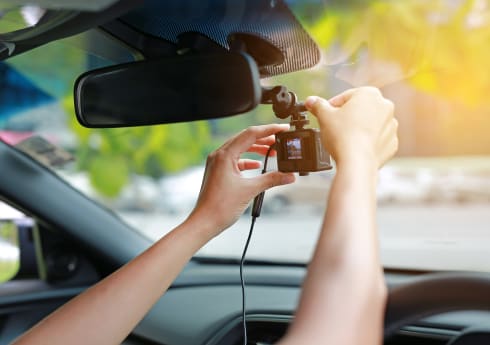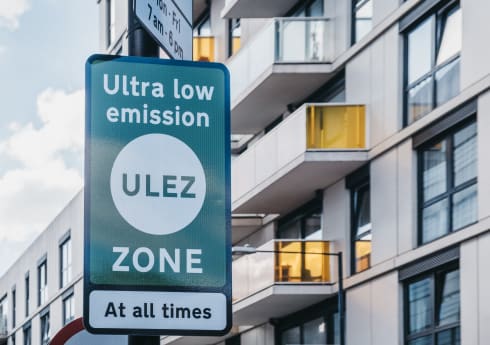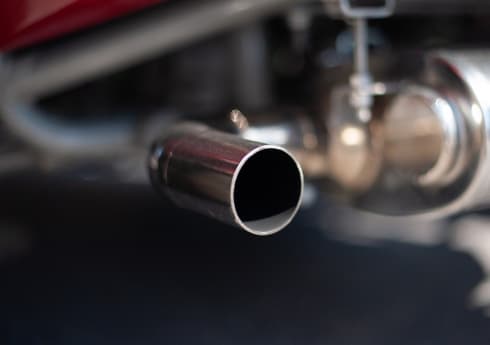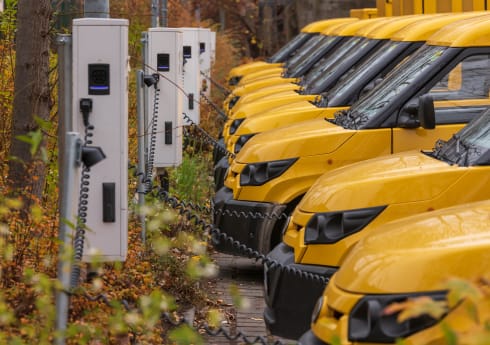Direct Vision Standard (DVS) Guide for Businesses
Direct Vision Standard (DVS) is essential if you operate HGVs in London (within the M25). But what exactly is this law? And what can you do to comply with it?
Well, we’re here to help! In this guide, we break down all the complex jargon to make everything easy to understand. Plus, you’ll get a chance to compare the market for essential telematics devices that’ll keep your business compliant.
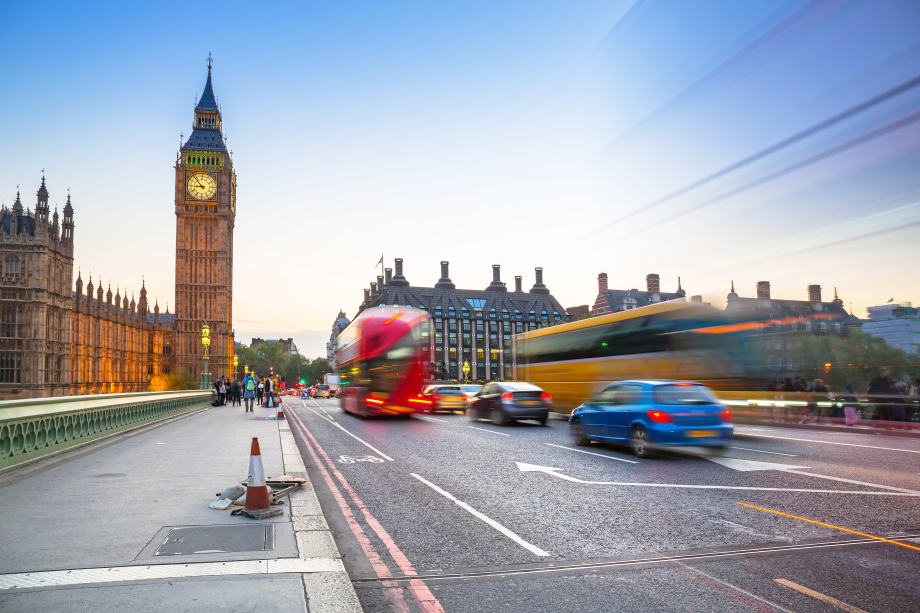
What is DVS? Direct Vision Standard’s law for HGV drivers
If you operate HGVs within the M25, you’ll need a DVS permit (the law came into effect in March 2021). If you don’t have it, you’ll get a £550 fine every time your vehicle enters the area.
The goal of DVS is to cut down on road injuries in London. That’s why 12-tonne lorries are banned from Greater London if they have blind spots where the driver can’t see cyclists, pedestrians and motorcyclists.
If your business operates HGVs, that means adding Safe System upgrades for your fleet. That includes devices such as:
- Cameras.
- Sensors.
- Mirrors.
All of these must improve vision from the driver’s cab.
So, yes, it’s compulsory. You either follow the law, or you’ll have to face ongoing fines. And that means you need to get permission to enter the area.
Which vehicles does DVS affect?
All HGVs with a weight (GVW) of 12 tonnes or more (N3 category vehicles) must have a DVS permit. That includes HGVs registered abroad.
It doesn’t apply to buses, coaches or any vehicle below 12 tonnes.
The London DVS zone

Above is a Direct Vision Standard map of the London DVS zone.
The area covers all 32 London boroughs and the City of London. The above map should help you out. HGVs will need a permit to drive on any road within the zone.
It’s smaller than the area within the M25, but it does include every A-road leading into London. And it’s a much larger area than the ULEZ congestion charging zone.
Everything you need for Direct Vision Standards compliance
Own an HGV? Plan to head into Greater London? Then you must follow these three steps:
- Check your vehicle’s star rating.
- Add Safe System equipment (if you need to).
- Apply for your vehicle’s permit.
And… what does any of that mean? Well, we break these steps down for you below. It can get a bit complicated, so we’re breaking everything down to be easily understandable.
1. Check your vehicle’s star rating
All HGVs have a star rating. Transport for London (TFL) provides the ratings based on what a driver can see from their cab.
It’s a 0-5-star system. The highest rating is 5 stars and means you max out your compliance. Well done! But the lowest is 0 stars, which means you’ll have to make significant upgrades.
Find a vehicle’s star rating
You can check your HGV’s star rating by entering its license plate into the TFL website.
If TFL doesn’t have your vehicle on record, you’ll have to get a certificate from your manufacturer and send it to TFL. To do that you should:
- Send the manufacturer your chassis number (VIN).
- Wait for the star rating certificate.
- Upload it to the TFL website.
After that, you’re good to move on to the next step.
2. Add Safe System equipment
An HGV rated 1-5 stars is acceptable—you’ll get permit. However, if your HGV scores 0 you’ll need to add Safe System vision equipment.
Basically, for 0 stars it means your driver has limited direct vision to their left.
And keep in mind TfL advises you to upgrade any vehicle with 1 or 2 stars, too. So, you should take the steps now to future-proof your fleet.
To upgrade your HGV, follow the below guidelines. Again, it’s a legal requirement for 0-star vehicles. You can’t skip these updates. Here’s a quickfire breakdown of the steps:
- Improve indirect vision: This is to help drivers around your vehicle. For this, you’ll need to fit:
- Class V and VI mirrors.
- Fully operational camera monitoring system.
- Sensor system with driver alerts.
- Warn road users of your fleet’s driving manoeuvres: Your drivers need to send clear signals out to road users and the public. To do that, you’ll need:
- Audible vehicle warnings for left turns (or right turns if the vehicle is left-hand drive).
- Warning signs on your vehicles.
- Minimise the potential for serious injury: In the event of an accident, you need to limit the possibility of severe injuries. Here’s how to do that:
- Fit side-underrun protection (these panels make sure people can’t slip under the vehicle between the wheels).
Okay then, how do you go about getting upgrades for your vehicle? And at a good cost? Well, we can help you out there. And it starts with your camera system.
Dash cams for Direct Vision Standard
With dash cams fitted to your fleet, you can take a massive step towards guaranteeing compliance with London’s DVS needs.
There are all sorts of dash cams you can get. You can get them fitted all over your vehicle, from at the front, to the side and at the rear. With dash cams fitted, you can:
- Meet DVS laws and get your permit.
- Reduce the risk of accidents.
- Protect your business from accident liability.
- Monitor driver performance.
It’s good business practice to have dash cams on your fleet. And it’s a must if you’re looking to pass DVS and get your permit.
You can read our business guide to Direct Vision Standard cameras if you need to know more. Or go ahead and compare the market now to find your device.
Telematics systems for Direct Vision Standard
To complement your fleet’s compliance with DSV, you should look to get fleet telematics systems. With these, you can monitor your vehicle:
- CAN data and diagnostics (health, temperatures, fuel use, breakdown status etc.)
- Real-time location
- Tachograph data for driver behaviour insights
You can also get access to customisable dashboards and reports to keep you in total control at all times. It adds an extra layer of security when you’re out and about on London’s hectic streets.
With a telematics system, you’ll have extra armour alongside your DVS permit to ensure you’re driving safely on London’s roads. And that can protect your business further.
Vehicle tracking for Direct Vision Standard
You may also want to fit fleet vehicle trackers. Along with dash cams and a telematics system, you get more control over your drivers.
With a vehicle tracker fitted, you can keep track of:
- Vehicle locations (in real-time).
- MPG and fuel usage.
- Driving styles across your fleet.
With the data you get, you can use that knowledge to help you drive safely around London, save on fuel, insurance and vehicle maintenance.
You’ll also get instant alerts in the event of an accident.
It’s good business practice to have vehicle trackers fitted. They protect your interest, but also promote better safety standards on London’s roads.
iCompario Tip: Don’t forget 2024’s Progressive Safe System
From October 2024, the Progressive Safe System will introduce tougher rules. Permits for HGVs with less than 3 stars will expire.
At that point, you’ll need to make further upgrades and apply for a new permit. Any HGVs with a lower rating than 3 will receive a ban.
How to apply for a DVS permit
It’s the final step! You’ll need to make an online application. The Direct Vision Standard and HGV safety permit is what you need. Once you have this under your belt, you can head out into London and travel from A-B with total compliance.
It’s free of charge to apply for DVS permits. You can make your application here: DVS HGV Safety Permit Application. You’ll need to enter this info:
- Your vehicle details (you can enter multiple vehicles in one go).
- Its star rating.
- Operator details.
- Your contact details.
If your vehicle is 0 star, upload two photos of the Safe System equipment it has.
If your DVS permit application is rejected, you’ll be told why. After that, you can then make some adjustments and re-apply.
All is not lost if you’re rejected the first time for your DVS permit. Keep that in mind, as you can have another go once you’ve adjusted a few more things.
And the good news is permits for vehicles with 3 stars or more last a decade.
Vehicle exemptions from London’s Direct Vision Standard
Some large vehicles are exempt from DVS. It’s worth making sure, as a business owner, to see if you can skip on a permit application.
The types of vehicles exempt include:
- Telehandlers.
- Mobile cranes.
- Specialist gritters and snow ploughs.
- Armed Forces vehicles.
- Historic vehicles.
- Vehicles being towed by previous arrangement.
The list of complete exemptions is in Appendix A of TfL’s HGV safety permit guidance.
If you’re in the UK and your vehicle is on the national register, then you’ll enjoy automatic exemption. But if you’re unsure, doublecheck with TfL to make sure.
Compare DVS equipment providers for free
Okay, that was a lot to get through! We hope you’re now much more in the know about DVS and its needs.
But remember, it’s mandatory. Even for 3- star vehicles by 2024, so you should start to upgrade your fleet as soon as possible. Telematics systems and dash cams are the ideal way to do just that. And with our free service, you can:
- Enter a few business details.
- Get some seriously good recommendations.
- Choose your deal!
Simple as 1-2-3! You can hit the button now and save your business time and money, starting you on the road to getting DVS compliant.
